The Paintings of John Lloyd
If you have strolled by the windows of the Western Union Building on the West Broadway side, you’ve seen the paintings of John Lloyd, who has the exhibit up there for the next several weeks. They are charming, and a wonderful way to appreciate the neighborhood’s architecture, color and character — especially these days. (You can see more of his work on his website.) Here’s an explanation from John on how these paintings came to be:
On how he discovered Tribeca
I first became interested in Tribeca when I first moved to New York in the early 80s. I was living on the Lower East Side and my first job was a night job in the financial service industry on lower Broadway. I would walk back and forth to the job discovering various neighborhoods on the way and return on the weekends to sketch some of these places. I remember one August afternoon walking down West Broadway in Tribeca and it was so quiet that you could hear the boats and the seagulls in the Hudson River blocks away.
On the neighborhood scene in the ’80s
I was surrounded by extraordinary 19th Century commercial buildings — each one different from the other — seemingly expressing the character and spirit of the person who created the original building or business. You could feel the whole history of the place, all the goods being brought to the city and the products created in the area going out to the world. There was a sense of something wonderful sleeping, waiting to come back to life in some new way.
At that time there was also a vibrant creative scene from all the artists living there. I remember the restaurant Magoo’s filled literally to the ceiling with paintings and the magical experience of going to the club Area (on the rare times that I was lucky enough to be let in).
On how he returned
I ended up working in the graphic design field in midtown so my interest in Lower Manhattan went into the background for a while. Four years ago the company I was working for as a graphic designer moved to Wall Street and I had a chance to rediscover the wonder of Lower Manhattan again. During my lunch breaks, after weekends and returning on weekends I found that the whole area had come to life with new or revitalized public spaces: all the parks and gardens along the Hudson River and the small parks like Duane Park, Tribeca Park and Capsouto Park. There are now endless places with fantastic views where I can sit and sketch.
On how he starts a painting
My paintings usually begin with a a sketch where I observe a scene and look for a story. What is the history of this place? who lives here? why does the buildings look the way they do? And sometimes someone who lives there will share a story about a building or their own experience which relates to the place. I also enjoy looking for a whimsical possibility to add — it’s like watching or creating a movie. As the sketch turns into a painting, I let my imagination invent, exaggerate or reorganize the scene but try to stay close to the feeling of the place.
Because painting or drawing is a slow process, things will emerge that you might miss if you are just walking by and taking a photo. The style is mostly representational, but influenced by many years of working in the design world where illustrating and communicating a simple idea is a priority. Because of the convenience and portability, I tend to use watercolors or acrylics.
Looking forward to getting back to sketching in this extraordinary place.
From the archives:
• The Sketchbooks of Gavin Snider
• The Sketchbooks of John Donohue
• The Sketchbooks of Ian Berry
• The Watercolors of Nan Lombardi
• The Paintings of Bruce Paly
• The Sketchbooks of Peter Koval
• The Sketchbooks of Mariano Recalde
• Tribeca en Plein Air







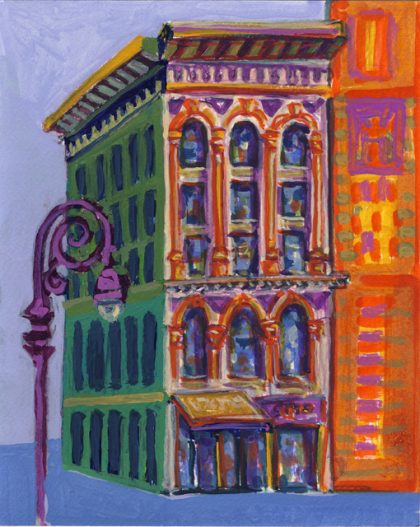
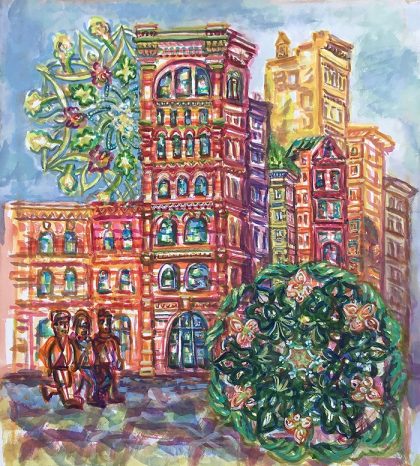
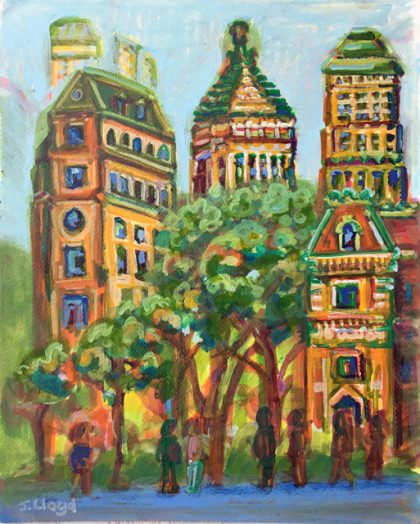
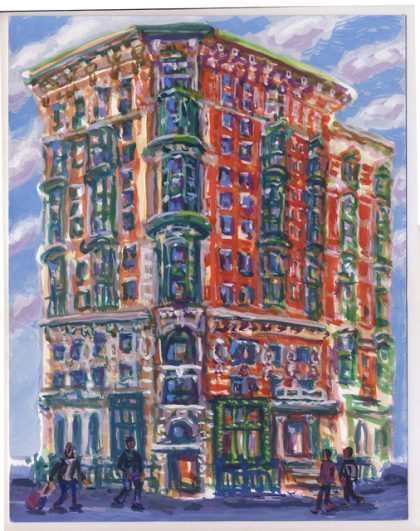
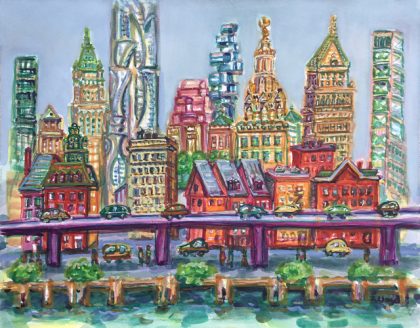
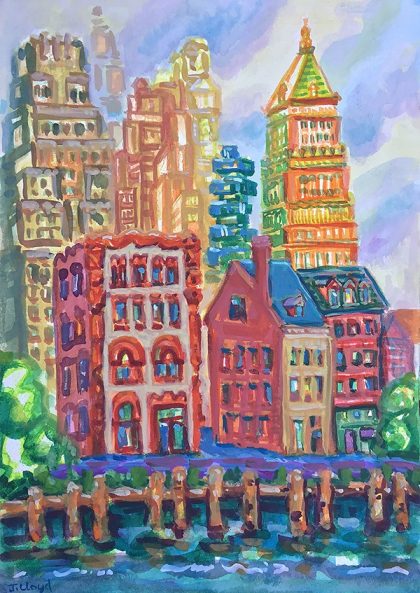
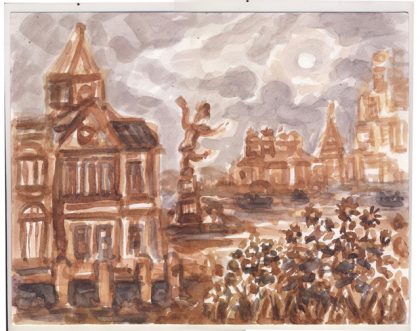
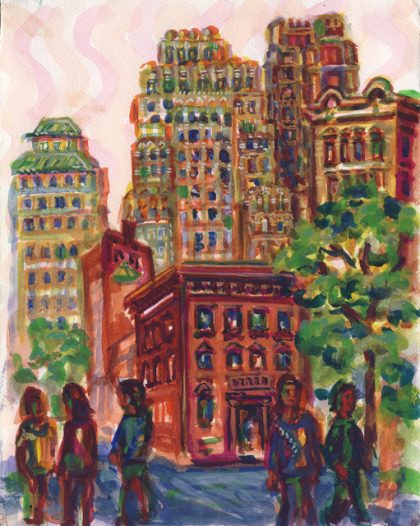
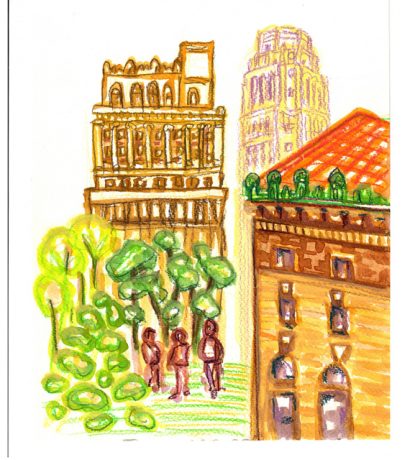
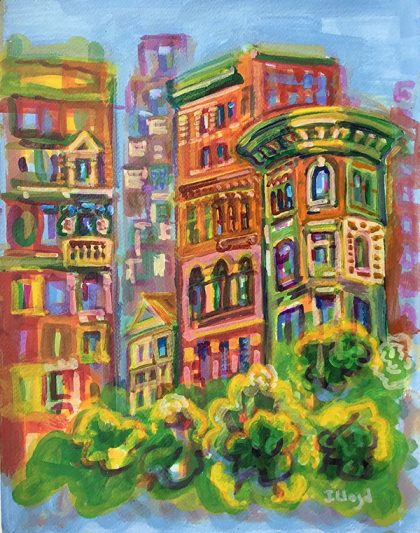







Really enjoy these paintings! I look at them every time I pass by. They are so well done and express the beautiful quality of light in Tribeca! Thank you!!
thank-you Bobbie
it was a real pleasure to share my paintings with Tribeca! glad you liked them!